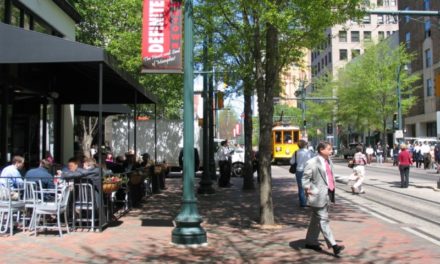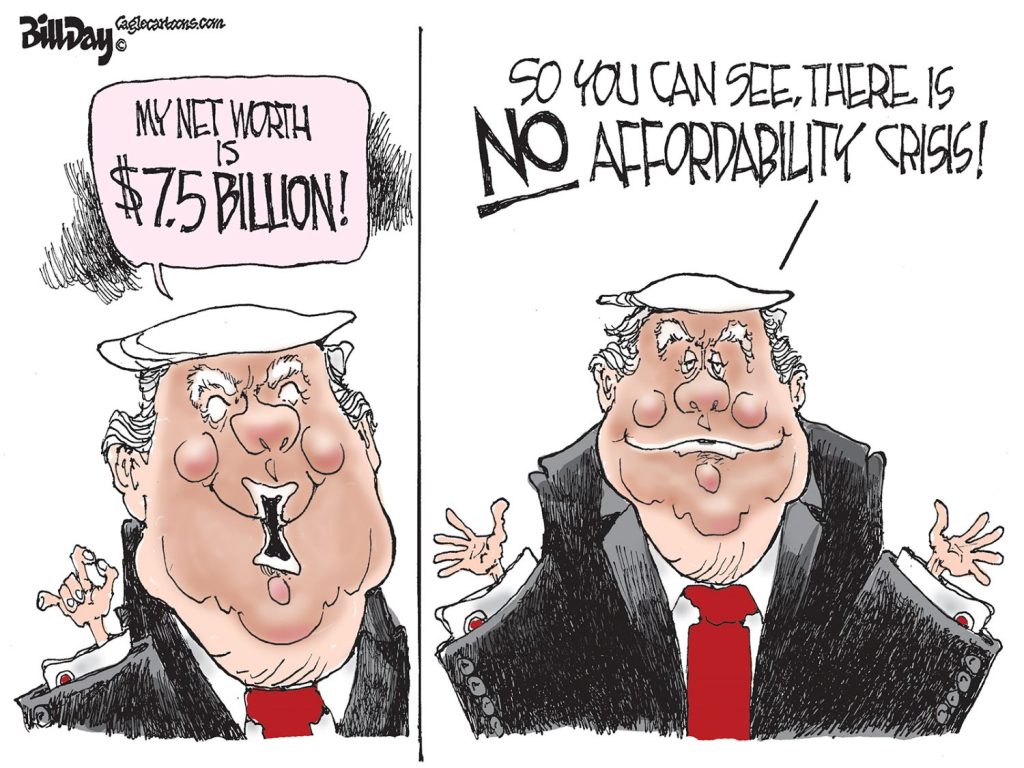These are momentous days for St. Jude Children’s Research Hospital.
Richard Shadyac announced Monday that he is stepping down as head of the American Lebanese Syrian Associated Charites (ALSAC), the organization charged with raising the lion’s share of the $2 billion a year that fuels the hospital’s life-giving work.
ALSAC just last week announced that it will build a new 16-story research tower as part of $2.3 billion in construction at the hospital site by 2027. That amount is a key part of the hospital’s $12.9 billion strategic plan.
Four months ago, St. Jude’s bought 23 parcels of land in the Pinch District for the hospital’s expansion to the west. The property was formerly owned by Tom Intrator, whose claim of a $1 billion plan to redevelop the historic district tied up the land with no realistic way forward.
Last month, 11 scientists at St. Jude were named on the prestigious 2024 list of Highly Cited Researchers which is described as someone who has demonstrated significant contributions in their fields and authored scientific papers ranked in the top 1% by citations by others.
All of this recent momentum should remind Memphis of how a modest dream for a hospital for poor kids grew to become an international research juggernaut that increased the childhoods survival rate from 4% in 1962 when the hospital opened its doors to 94% now for acute lymphoblastic leukemia and leads the way in defeating childhood cancer and other life-threatening diseases.
It’s also a good time to remember how closely we came to losing the hospital to St. Louis in 1985.
For that context, here’s an updated post from 2012:
It’s as easy to imagine Memphis without FedEx as St. Jude Children’s Research Hospital.
Both are here because of fortuitous – if not providential – twists of fate. Both are equal parts myth and fact, and from a germ of an improbable idea, each founder built something internationally-known and respected. Fred Smith invented modern global commerce and Danny Thomas set in motion dramatic breakthroughs in deadly childhood diseases.
St. Jude, as patron saint of lost causes, is central to the founding of the hospital bearing his name, and while some urban experts act as if Memphians should be praying to him, the story of St. Jude Children’s Research Hospital is a different city narrative worth retelling.
By all rights, the hospital should be in Chicago, where entertainer Danny Thomas, in a desperate plea for a life beyond his $7 a night gigs as a vaudeville comedian, prayed to St. Jude for help and promised to build a hospital for poor children in the saint’s honor. It was fortunate for Memphis that Thomas, a devout Catholic, talked with Samuel Strich, archbishop of Chicago and former pastor at Memphis’ St. Patrick’s Catholic Church. He suggested that Thomas build his hospital here.
It was not the only advice Strich gave him, Thomas said. When Thomas told the archbishop that early fund-raising was not going well, Strich told him to lay a concrete slab on the site, take people there, and ask them for donations to build a hospital on it. It’s easier to “sell a slab,” he was told. After raising enough money, the slab was demolished before the first building was built.
Honorary Memphian
Fundraising began in 1957, and it was five years later that St. Jude Children’s Research Hospital opened a month after Thomas’ 50th birthday. It was a modest beginning: a small building, 125 employees, and a $1 million a year budget (the amount spent daily now is $5.5 million).
In 1971, as Thomas’s airplane descended for his annual fundraising all-star show, a rainbow arched across the sky, leading me, then a Memphis news reporter, to write that I envied Thomas’ deal with St. Jude.
He was a frequent visitor to Memphis, and once Danny Thomas Boulevard was named for him, he reveled in repeating newspaper headlines like Mule Dies on Danny Thomas. Whether there was ever literally such a headline mattered little when he applied his comic timing to its telling.
If it was good fortune that brought Thomas to Memphis, and it was his love for the city that kept the hospital here. In 1985, St. Louis and Washington University officials wooed the board of directors to move the hospital there. It was a possibility that shook off Memphis’ complacency because the odds were strongly on St. Louis’ side.
Rooster Dainties Rather Than Foie Gras
Fresh from a black-tie dinner in St. Louis with the Missouri governor, St. Louis mayor, Wash U.’s chancellor, and area business leaders, Thomas and key board members flew to Memphis to inform Shelby County Mayor Bill Morris and Memphis Mayor Dick Hackett that they were seriously considering a move out of Memphis.
They asked for the mayors to meet them for dinner and Morris told them he would handle the arrangements. The evening after the formal dinner in St. Louis, Morris, with Hackett, drove the group to a nondescript hole-in-the-wall restaurant between West Memphis and Marion. In a private room with bare tables, they ate “rooster dainties” and other down home fare under a dangling, bare light bulb, and Thomas and Morris, both consummate story-tellers, kept each other laughing for hours.
Morris said later that Memphis couldn’t compete with Washington University’s prestige or St. Louis’ gala pitch, so instead, Memphis sold relationships, friendship, and camaraderie. There was to be a 15-month evaluation by the board and Thomas told its members it was their decision to make, but he spoke often about his special fondness for Memphis.
After the board received detailed proposals from both cities, a vote was set for Miami. Memphis had rallied with promises of more cooperation from University of Tennessee Health Science Center and Le Bonheur Children’s Hospital and more financial help from Memphis, but the prediction was for a razor thin vote.
Answered Prayers
True to his word, Thomas remained neutral, but his silence was the same as voting for Memphis. The fact that he took no position was interpreted to mean that he was unswayed by St. Louis. The debate was over.
Rather than move to St. Louis, St. Jude Children’s Research Hospital board announced that it would embark on expansive new plans to drive a deep stake in the ground in Memphis for a highly-acclaimed institution of caring and curing.
There’s no argument these days that if you need an example for the power of prayer, the hospital is nothing short of a godsend.
From dinners and meetings with Danny Thomas, I remember his constant good humor and his sincerity when explaining how the hospital was a symbol of his gratitude and pride in the way that America had welcomed the immigrant families of Lebanese and Syrian families.
In fact, the website for the hospital points this out: “By supporting St. Jude, this group of Americans could thank the United States for the gifts of freedom given their parents and also be a noble way of honoring their forefathers who’d immigrated to America.”
Amos Muzyad Yakhoob Kairouz
I remember Danny Thomas as a gracious, patient man who treated everyone as his equal, always found time to tell the St. Jude story to anyone who could help his hospital, and whose smile was never broader than when he was with “his kids” at the hospital.
 Memphis and the world are indebted to him for giving us St. Jude Children’s Research Hospital. It speaks to the giant humanitarian who made it happen, but it also speaks to the nobility of every person, particularly those who come from immigrant families from faraway lands to the United States in hopes of finding better lives.
Memphis and the world are indebted to him for giving us St. Jude Children’s Research Hospital. It speaks to the giant humanitarian who made it happen, but it also speaks to the nobility of every person, particularly those who come from immigrant families from faraway lands to the United States in hopes of finding better lives.
It stands as a testament to a remarkable man whose real name was Amos Muzyad Yakhoob Kairouz but was Danny Thomas to a country that laughed from his jokes and that was entertained by his television programs, but whose real driving purpose in life was to build a hospital in Memphis, Tennessee.
Today, it’s hard to imagine Memphis without St. Jude Children’s Research Hospital, and it’s hard to imagine what our city and cancer rates would be if Danny Thomas’ immigrant parents had been turned away when they came to America.
If you are looking for inspiration and for a reminder about the true promise of the American Dream, try to visit the Danny Thomas/ALSAC Pavilion at St. Jude Children’s Research Hospital. It tracks the life of its founder and of ALSAC from struggling Lebanese comedian to Emmy-winning television star and producer. More to the point, the pavilion is home to some of the many awards and honors he received on behalf of his work for the world’s children.
Danny Thomas and his beloved wife, Rose Marie, are buried outside of the pavilion, a place he selected as the ultimate homage to his life’s work.
St. Jude Children’s Research Hospital is in Memphis because of Danny Thomas, and it is safe to say that he could never have dreamed of what it has become today – an international place of hope and healing and as much a part of the city’s character as the Mississippi River.
**
Join me at the Smart City Memphis Facebook page and on Instagram where these blog posts are published along with occasional articles, reports, and commentaries that are relevant to Memphis.






